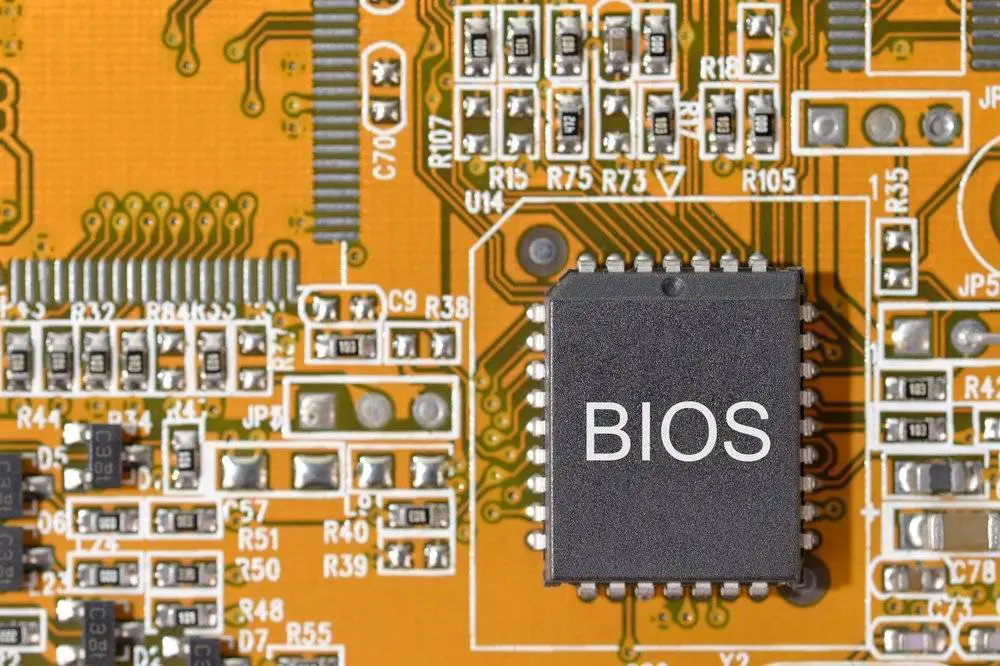Table of Contents Show
Modern computers come with UEFI (Unified Extensible Firmware Interface) boot firmware that enables users to easily update the BIOS firmware on their motherboard. This guide will teach you how to update the bios on a motherboard using a USB drive, instead of via the motherboard’s own built-in utility.
By using a USB flash drive for the update, you can have better access to the configuration options. This guide will also show you how to verify that your motherboards new bios has been successfully installed, as well as how to restore the firmware back to its original settings if things go wrong.
Why you might want to update your BIOS
Motherboard manufacturers are constantly updating their motherboards. The updates can fix problems with the motherboard, add new features, or improve performance. Updating your BIOS can be tricky, so it’s important to follow the instructions from your motherboard manufacturer carefully. If you don’t update when it’s recommended, you might not be able to use some of the new features or you could experience problems with your motherboard. If you’re not sure if your computer’s needs the update, or if you just want to check what’s available, our guide can help.
Types of BIOS updates
Upgrades are a way to keep your computer up-to-date and secure. They can fix security issues, add features, or fix problems with the operating system. There are several different types of BIOS updates. Here’s a look at each type:
-Security updates: These fixes any security vulnerabilities that may be present in your computer.
-Feature updates: These changes may include new features, bug fixes, or performance enhancements.
-Bug fixes: These fixes are for problems with the BIOS itself. They’re typically done when a particular feature doesn’t work properly.
-Performance enhancements These fixes can improve your computer’s performance.
-Updates to driver software: Drivers are software that allow your computer to communicate with hardware components. Drivers also allow you to install new hardware components.
BIOS update software is designed to allow you to create a backup of your current settings before installing a new version. This backup can be used to restore your system if something goes wrong during the installation process.
How to find the latest bios for your motherboard?
There are many websites out there but finding the latest bios for your motherboard can be difficult. The best way to find your motherboard’s drivers is by searching for them on the manufacturer’s website. If your motherboard manufacturer has a support section on its website, it will have the latest drivers available. If you don’t find any drivers available, try Googling your motherboard model number and “driver download” or “bios update”.
What to do before updating?
How to update the bios on a motherboard to latest version can be a daunting task so before updating, make a backup of your current settings. This includes the settings in your CMOS. You can also save your data drive to an external hard drive or USB flash drive for safekeeping.
Here are five things you should do before updating:
1) Make sure you have the correct driver for your motherboard and hardware.
2) Back up any important data first.
3) Verify that your computer is stable and not experiencing any major issues.
4) Be sure to follow the instructions provided by your motherboard manufacturer.
5) Make sure the system is not in any sleep or hibernation states.
You can get to your BIOS settings by pressing the [F2] or delete key during computer startup. Also you can find it by following the instructions found in your motherboard manual. If you are not sure what version your motherboard has, look for a sticker on the board. This will tell you the version, manufacturer and everything else about your motherboard.
Is it safe to update the motherboard BIOS?
Updating may seem like a simple task, but there are risks involved. First, if the update is not done correctly, it could ruin your computer. Second, updating could also cause your computer to stop working altogether. Third, the upgrade can also lead to security vulnerabilities.
Finally, updating can also cause your computer to run slower than before. So, is it really safe to update your BIOS? The short answer is yes, it is safe. The long answer is: there’s no real reason not to update, but If you have any questions or concerns, we recommend that you do not update. You may want to contact your motherboard manufacturer directly.
How to update the bios on a motherboard?
If you want to update, there are several ways to do so. The most common method is to use the motherboard’s integrated update utility.
Here are two process that can help you find the latest software for your motherboard:
1. First, check the manufacturer’s website for the latest updates. Often, you can find a downloadable file on the website that will walk you through the upgrade process.
If you don’t see a downloadable file on the website, try searching for “BIOS update” + “motherboard name” or “BIOS update” + “model number”. This will usually bring up results from third-party websites where you can download the latest version for your motherboard.
Next, you can download the software from the manufacturer’s website and save it on your hard drive. Then, simply follow the instructions on the website that tells you how to install the update. Also a more direct way to get the latest update is by using a BIOS flashing utility.
These utilities allow you to download and flash the new BIOS via the Internet, which can be done from any computer connected to the Internet. Many motherboard manufacturers have this utility available for download on their websites. You can also request the upgrade from the manufacturer directly. You will need to contact your motherboard manufacturer for instructions on how to update the bios on a motherboard.
2. Guru3D: Guru3D is a website that specializes in gaming hardware and software.
Updating can be a tricky process, but it’s important to do in order to keep your system running smoothly. The good news is that most motherboard manufacturers make it easy to find and download the latest versions for their products.
Here are a few tips on how to find and install the latest BIOS for your motherboard: from Guru3D:
- Unzip the downloaded BIOS file and copy it to a USB flash drive
- Load up your favorite motherboard diagnostic utility
- Select the “Update” option
- Select your USB drive
- Select the “Update” option
- Your motherboard should now be updated, and you can move on to the next step.
However, some motherboards require you to flash your BIOS using a secondary means of updating. This is because the motherboard manufacturer has disabled the BIOS flash update utility on your board.
In this case, you’ll need to download and install a secondary BIOS update utility. You can download the latest update utilities from most motherboard manufacturers’ websites. Once you have installed the utility, it will prompt you to select the version and your motherboard’s model in order to flash.
If you have updated it successfully and the computer still won’t boot, there are a number of possible problems. First, make sure that you have saved all files necessary to restore the system to its original state should a problem arise. You should back up the contents of the system’s flash drive and any other data you might want to keep.
Also, make sure that you have installed all necessary drivers before proceeding with an upgrade. If you are using a Windows-based computer, try using a Windows application called Flash BIOS Update Utility. This utility would allow you with the update without having to use a flash drive.
What to do if update goes wrong?
If you’re unlucky enough to experience issues, there are some steps you can take to try and rectify the situation. First, try reinstalling the update and clear the CMOS. Check to see if any of your hardware is fried. If it isn’t, then your next step is to try and reset your computer. This can be done by removing all of the hardware in your computer, turning it off and then back on, and finally reinstalling the operating system. Make sure you have the latest motherboard BIOS upgrade software before attempting this. If all else fails, contact your reseller or motherboard manufacturer for assistance.
How to check if the motherboard bios update was successful?
To check if a update was successful, check the BIOS settings after upgrading. If there was an update correctly, it will be listed somewhere in the BIOS settings. If it is there, you should be able to access the settings by pressing the Delete key during computer startup.
The exact steps will vary depending on your motherboard’s make and model, so be sure to consult your motherboard’s manual or support website.
Once you’ve installed the update, restart your computer and look for a message during boot indicating that the upgrade was successful. If everything goes according to plan, you should then be able to enjoy the benefits of the new version.
How do you fix a failed BIOS update?
If your computer fails to start after the update, you may be able to fix it using a flashback procedure. The steps below are provided as a general guide. If you are not sure whether you can fix your computer using these steps, contact Support.
What is a BIOS flashback?
A Flashback is a way to reset the BIOS settings on your computer back to the state they were in when it was first equipped.
This is useful if you have done the update and now need to revert back to an earlier version. NOTE: The flashback is not a way to downgrade your motherboard BIOS. For example, a flashback cannot be used to downgrade from an F5 version to a D5 version, but can be used to restore the default settings of the computer. NOTE When using a flashback, do not power down your computer until after you have done installation.
Conclusion
Please make sure to backup any important data before updating. If you follow the directions and you are succeed but if your computer is not working after the update or you are unsure of the steps to take, please ask a Support Technician or post on the forum which will help you on how to update the bios on a motherboard if you want to do it on your own. We hope you have found this guide helpful.












